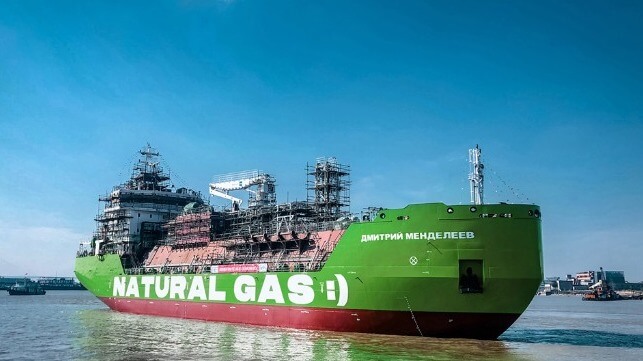Study: Renewable LNG May Not Improve Near-Term GHG Emissions
The benefit of renewable LNG may be outweighed by demand growth and methane slip, at least in the near term, a think tank reports.

A new study from an American think tank suggests that renewable bio-LNG would require billions of dollars in subsidies to use across Europe, and its use would slightly increase net greenhouse gas emissions if uptake increases and impact is evaluated on a 20-year timescale.
When running on LNG rather than VLSFO, dual-fuel LNG vessels emit a small amount of unburned methane from their main engines and generators. The actual percentage varies based on engine design and load profile, and shipboard emissions are variable. LNG-fueled vessels also share in the methane emissions from natural gas production and transport; these "well-to-tank" upstream emissions vary widely between different energy producing companies.
LNG proponents suggest that replacing fossil LNG with renewable LNG (from biological or synthetic sources) would address these concerns. A new study by the Washington-based International Council on Clean Transportation (ICCT) finds that this is partly correct - but only if the methane's warming potential is evaluated on a favorable 100-year timescale.
Methane breaks down in the atmosphere on a decadal timeline, so it has the most impact on warming in the first years after it is emitted. If evaluated on a less-favorable 20-year timeline - the early years which are critical to hitting the Paris Agreement targets - ICCT finds that the well-to-wake emissions from renewable LNG will result in a six percent higher warming effect from the EU LNG-fueled fleet by 2030 (if demand for LNG triples, as the think tank expects). This result stems largely from ICCT's estimate of methane slip from marine engines, as well as the fact that methane is 80 times more powerful than CO2 as a greenhouse gas on a 20-year timeline.
"Overall, for renewable LNG to be useful in significantly contributing to climate goals, methane slip from marine engines needs to be virtually eliminated and methane leaks upstream need to be greatly reduced. Additionally, methane leaks from LNG fuel
tanks and LNG cargo tanks on ships, which researchers are still working to adequately quantify, would need to be near zero," ICCT concluded.
Uptake of renewable LNG will be contingent on supply and affordability, and ICCT's results suggest that both could be a challenge. The researchers estimate that renewable bio-LNG from agricultural waste will likely be about seven times as expensive as fossil LNG by 2030, requiring heavy subsidies to make it economical for shipowners. ICCT pegged the subsidy amount for price parity at about $2,400 per tonne, or about $18 billion per year.
As an alternative, the researchers point to non-methane alternatives, like synthetic diesel and green methanol, which can be stored without cryogenic refrigeration and transported using conventional means. "Future work can focus on the potential demand for and supply of nonmethane fuels to support the transition to zero-emission vessels," recommended ICCT.

that matters most
Get the latest maritime news delivered to your inbox daily.
Alternatively, ICCT noted that a full-scale switch to high pressure dual fuel (HDPF) engines - which cost more but have very low methane slip - would cut emissions to a small fraction of the projected amount. However, HPDF engines account for just 10 percent of total LNG consumption today, and the think tank expects their market share in Europe to shrink by 2030.
Methane slip sensing and prevention technologies for all engine types are in development, and this is an active area of research for the industry. However, ICCT indicated that "we do not believe it is realistic to think that the existing fleet could or would be modified to achieve the same low methane slip emissions as HPDF engines by 2030."
